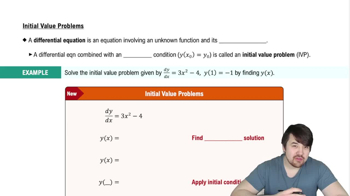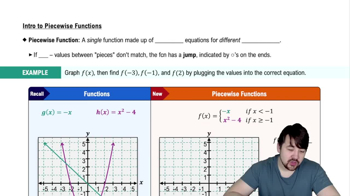Velocity from position The graph of represents the position of an object moving along a line at time . <IMAGE>
a. Assume the velocity of the object is 0 when . For what other values of t is the velocity of the object zero?
 Verified step by step guidance
Verified step by step guidance Verified video answer for a similar problem:
Verified video answer for a similar problem:



 1:36m
1:36mMaster Introduction to Calculus Channel with a bite sized video explanation from Patrick
Start learning